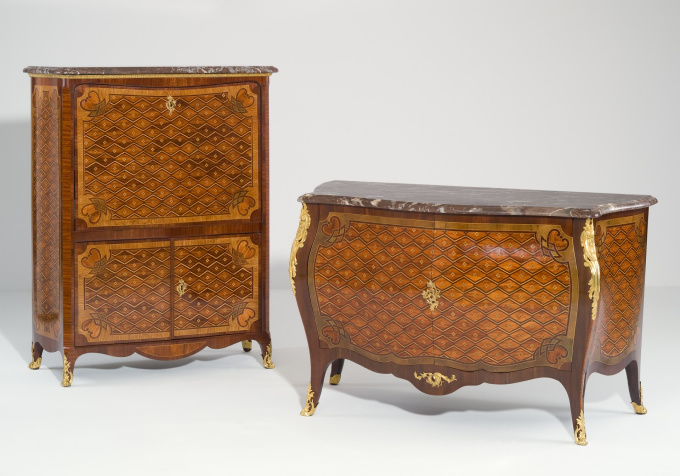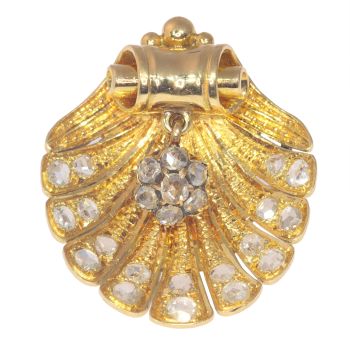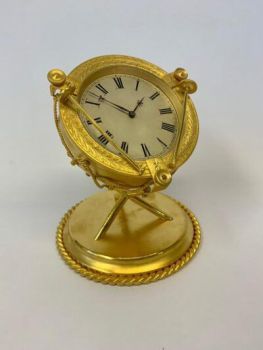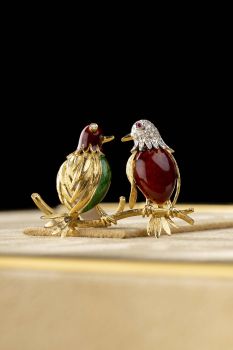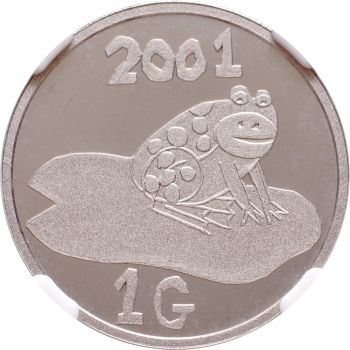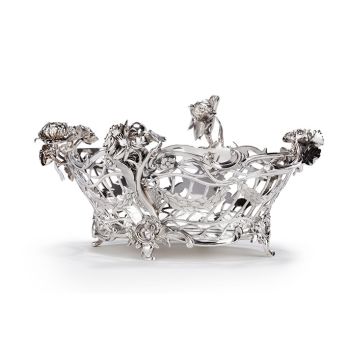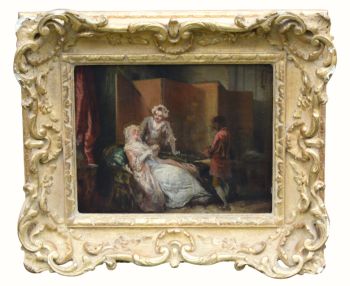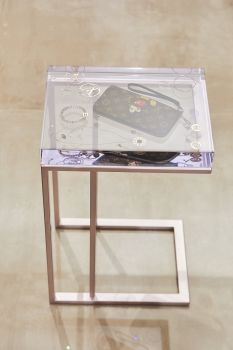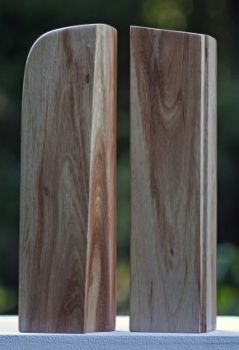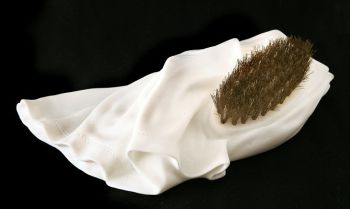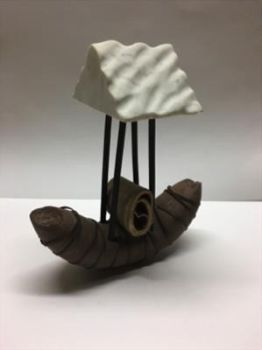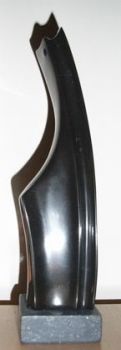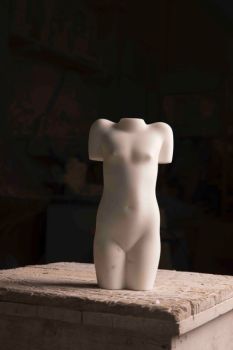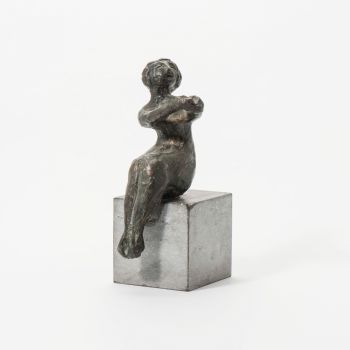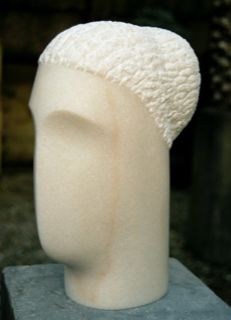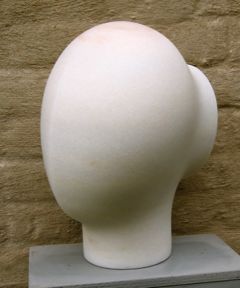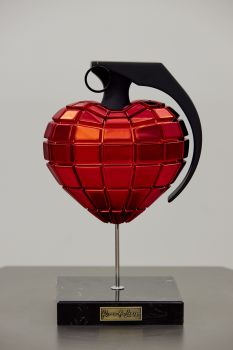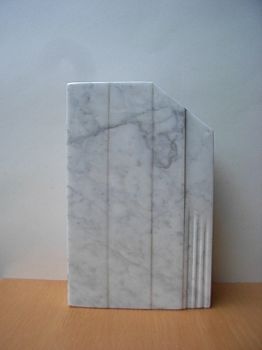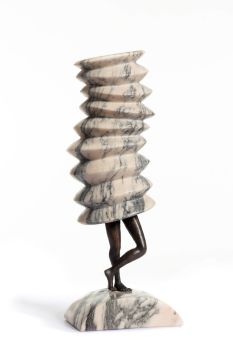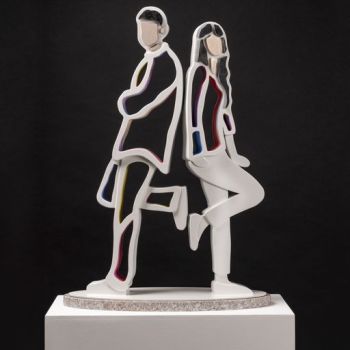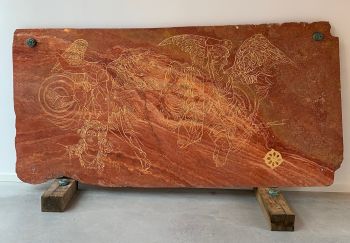Um Conjunto Combinado de Secretária e Cômoda 1760 - 1770
Artista Desconhecido
MármorePedraMadeiraCarvalhoMármore vermelho
89 ⨯ 144 ⨯ 66 cm
Atualmente indisponível via Gallerease
- Sobre arteCommode
The commode has an interior with one shelf. The front and side are bulged out. The front is fitted with to doors instead of drawers. The doors are fitted with a bronze ornamented scutcheon in the middle. The curved corners are mounted with gilt bronze mounts that are decorated with acanthus and flowers. The mounting on the skirt and the scutcheon are decorated with asymmetrical rocailles and flowers.
Front and sides of the commode are decorated with a geometrical inlayed zig-zag pattern that is studded with small rosette-motives. The geometrical pattern is framed in a cartouche.
Measurements: heigth 89 cm, width 144 cm, depth 66 cm.
Secrétaire
The lower part of the secrétaire is a cupboard with a shelf that is closed by two doors. The upper part is closed by a leaf that once extended serves as a writing desk. The writing desk is lined with green leather. The interior is veneered with mahogany, boxwood and kingwood. The interior has seven drawers, an open section and a curved shelf. The exterior is decorated on the side and the front with a geometrical inlayed zig-zag pattern that is studded with small rosette-motives. The zigzag pattern is framed in cartouches with ornamented corners.
Ensembles of different types of furniture with a similar decoration were often seen in the 18th century as a means to enhance the unity of an interior. In the Netherlands this practice was copied from the French, who were very strong on the unity and harmony of colours and materials in the interior design.
An identical commode is to be found in the collection of the Markiezenhof in Bergen op Zoom. Undoubtedly these commodes were once eachother’s pendants that might have been seperated when the pieces were auctioned after the owners decease.
Measurements: height 137 cm, width 109 cm, depth 46 cm. - Sobre artista
Pode acontecer que um artista ou criador seja desconhecido.
Algumas obras não devem ser determinadas por quem são feitas ou são feitas por (um grupo de) artesãos. Exemplos são estátuas dos tempos antigos, móveis, espelhos ou assinaturas que não são claras ou legíveis, mas também algumas obras não são assinadas.
Além disso, você pode encontrar a seguinte descrição:
•"Atribuído a …." Na opinião deles, provavelmente uma obra do artista, pelo menos em parte
• “Estúdio de…” ou “Oficina de” Em sua opinião um trabalho executado no estúdio ou oficina do artista, possivelmente sob sua supervisão
• "Círculo de ..." Na opinião deles, uma obra da época do artista mostrando sua influência, intimamente associada ao artista, mas não necessariamente seu aluno
•“Estilo de…” ou “Seguidor de…” Na opinião deles, um trabalho executado no estilo do artista, mas não necessariamente por um aluno; pode ser contemporâneo ou quase contemporâneo
• "Maneira de ..." Na opinião deles, uma obra no estilo do artista, mas de data posterior
•"Depois …." Na opinião deles uma cópia (de qualquer data) de uma obra do artista
• “Assinado…”, “Datado…” ou “Inscrito” Na opinião deles, a obra foi assinada/datada/inscrita pelo artista. A adição de um ponto de interrogação indica um elemento de dúvida
• "Com assinatura ….”, “Com data ….”, “Com inscrição ….” ou “Tem assinatura/data/inscrição” na opinião deles a assinatura/data/inscrição foi adicionada por outra pessoa que não o artista
Artwork details
Related artworks
Artista Desconhecido
Engels struttclock gesigneerd H.Rodrigues 42 Piccadilly 19th century
Preço em pedidoNico van den Assem restauratie
1 - 4 / 12- 1 - 4 / 17
 Com curadoria de
Com curadoria deDanny Bree
1 - 4 / 24Artista Desconhecido
Set Franse Empire Pendules / Empire Lectura penduleearly 19th
Preço em pedidoKuipers Kunst & Antiek
1 - 4 / 24

